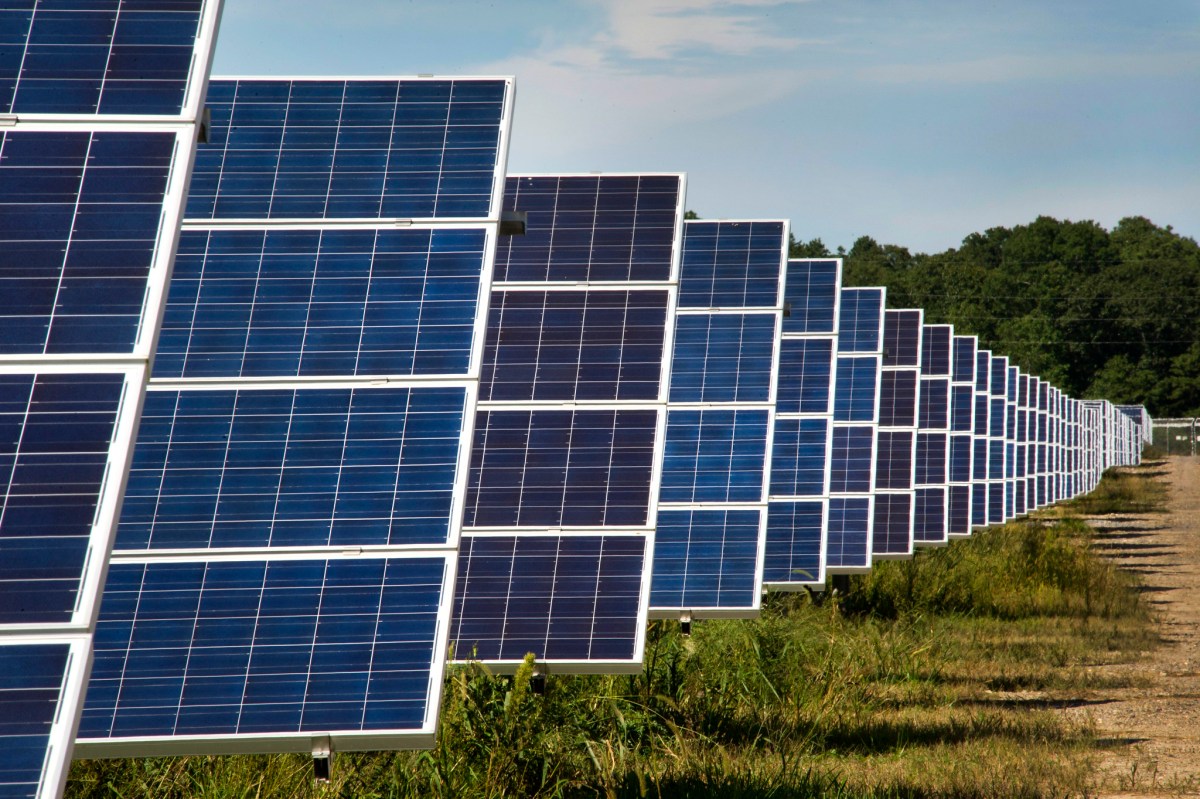All over the country, small and niche farming operations have proved solar panels and agriculture can not only work well together, but can actually be mutually beneficial.
In Maine, low-growing blueberries have had some success being planted around panels. In Vermont, fussy saffron thrives around an array. And there are plenty of farms where sheep and other small livestock graze around solar panels, enjoying the shade while keeping vegetation under control.

Now, an Ohio research project aims to find out how farming/solar partnerships — also known as agrivoltaics — can succeed on a much bigger scale, the Energy News Network reports.
At the 1,900-acre Madison Fields project, Ohio State University researchers planted popular crops grown in huge numbers across the Midwest — mainly alfalfa, hay, and other forage crops — among an 180 MW solar array. Researchers found these crops grew well among solar panels in an earlier, smaller pilot, but it’s unclear how feasible it is to grow them on a large scale.
“You hear a lot about produce and specialty crops,” explained Sarah Moser, the director of farm operations and agrivoltaics at Shell subsidiary Savion, which built the solar array. But raising them is “hard to do on 1,000 acres.”
Another part of the project focuses on farm equipment, including whether tractors and other wide equipment can fit between rows of solar panels. And after crops are harvested, the farm will bring in sheep to help trim back any extra vegetation. Researchers will keep an eye on the sheep’s health, and take note of what other care they’d need to live among solar panels.
It’s all in an attempt to alleviate fears in Ohio and beyond that solar farms are using up valuable agricultural land — though as one agricultural conservation group has found, urban sprawl is a much bigger threat.
Read more about the Madison Fields project at the Energy News Network.
More clean energy news
💧 Hydrogen debate continues: As the federal government starts sending funding to seven hydrogen hubs, researchers and advocates warn the industry could worsen greenhouse gas emissions and air pollution if it uses non-renewable power to make the fuel. (Grist/Public Health Watch)
☎️ Unexpected IRA lifeline: Former President Trump promises to halt Inflation Reduction Act spending if he’s elected, but legal and practical challenges, as well as Republican governors and lawmakers benefitting from the law, could hinder his efforts. (Politico)
🛢️ ‘Sacrifice zone’: A surge in oil and gas production, largely driven by fracking, has turned the U.S. into the world’s top producer — and fuels concern that the Gulf Coast is becoming a “sacrifice zone for the oil and gas industry.” (The Guardian)
💲 Tax credit firsts: A set of projects across Washington, D.C., and California mark the first time a company sold its Inflation Reduction Act solar tax credits to another company, a key tool to help encourage solar in new construction. (Canary Media)
💸 Paying for nothing: A condition of free trade agreements often lets fossil fuel companies pursue and secure big payouts if governments cancel their projects. (Inside Climate News)
🏛️ Federal proving ground: The U.S. General Services Administration, which runs the nation’s federal buildings, is using Inflation Reduction Act funding to decarbonize its infrastructure and derisk new technologies that can help other buildings cut their emissions. (Canary Media)
⚖️ Emissions rule fight continues: Republican state attorneys general ask the Supreme Court to temporarily block the U.S. EPA’s power plant emissions rule after a federal appeals court declined to do so. (CNN)
✅ Duality of the deal: Climate advocates hope Vice President Kamala Harris rekindles her support for the Green New Deal as she runs for president — as do Republicans, who hope to paint Harris as an “avowed radical.” (New York Times)
🔋 Batteries’ recycling edge: Researchers argue that the recyclability of electric vehicle battery minerals give them an environmental advantage over fossil fuels, despite the massive impact of mining for lithium and other components. (Canary Media)
🌬️ Winds of change: Wind development continues to divide residents in Midwest states, as misinformation leads to restrictive local regulations and local economic benefits can take years to materialize. (Associated Press)
📢 We want to hear from you! Send us your questions, comments, and story tips by replying to this email.
💸 Support our work: The Energy News Network is powered by support from readers like you. If you like Energy News Weekly, share it with a friend! Or give today and help us keep our news open and accessible for all.
📧 Want more energy news? Sign up for our daily digests.

